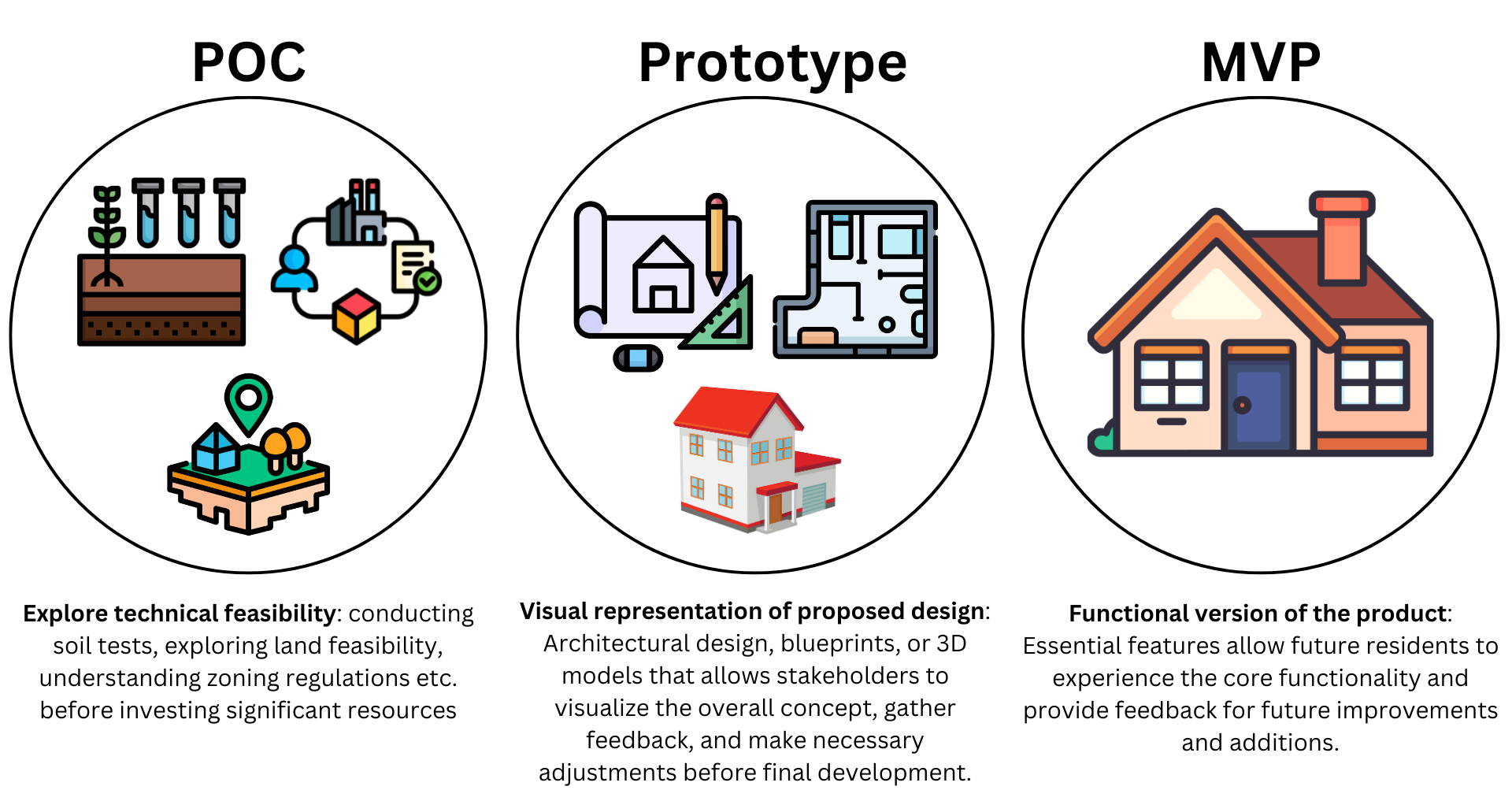I work with business folks with little knowledge of product development jargon. My goal with this post is to explain the difference between the various product development stages - Proof of Concept (PoC), Prototype, Minimum Viable Product (MVP), and the full product.
The proof of concept ensures the feasibility of the idea, the prototype visualizes the concept, the MVP provides a functional version for early adopters, and the final product is the complete, market-ready offering.
Building a House Metaphor

Proof of Concept (PoC): A PoC is like conducting soil tests, checking zoning regulations, and exploring the feasibility of building a house on a particular plot of land. A PoC aims to validate the core assumptions and technical viability of an idea before investing significant resources.
Prototype: A prototype is akin to creating architectural plans, 3D models, or even a small-scale model of the house. It allows you to visualize the design, layout, and overall concept of the house, enabling you to gather feedback and make necessary adjustments before construction begins.
Minimum Viable Product (MVP): An MVP is like building a basic, functional version of the house with essential features such as a living room, kitchen, bathroom, and bedroom. It’s a stripped-down version that allows potential buyers or tenants to experience the core functionality and provide feedback for future improvements and additions.
Final Product: The final product is the fully constructed house with all desired features, amenities, and finishes. It’s the complete, polished version that meets all the requirements and is ready for occupancy or sale.
Using a house building metaphor, we are able to illustrate the concepts since each step builds upon the previous one, allowing for validation, feedback, and refinement before committing to the final product.
Developing an AI product
| Phase | Proof-of-concept | Prototype | Minimum Viable Product | Full Product |
|---|---|---|---|---|
| Goal | To validate the technical feasibility of the core AI-powered functionality and ensure the proposed solution can be developed. | To create a working model that showcases the user experience and key features of the AI-powered product. | To launch a basic version of the AI product to the market and gather real-world user feedback to guide future development. | Develop a fully functional AI product with all desired features and functionalities. |
| Scope | Focus on the core AI algorithm and its integration with the system. | Develop a functional prototype that showcases the AI product’s user interface and user flow. | Develop a fully functional AI product with a minimal set of features that can be used by early adopters. | Implement all features and functionalities, including user interface and user flow. |
| Timeline | 1-3 months | 3-6 months | 6-12 months | 12-24 months |
| Stakeholders | Technical team (data scientists, engineers), product managers. | Product managers, UX designers, end-users. | Users, product managers, and potential investors. | Users, product managers, and investors. |
| Outcome | A small-scale demonstration that showcases the AI model’s ability to perform the intended task, proving the concept is viable. | A interactive, low-fidelity representation of the product that allows stakeholders to visualize the user flow, interface, and core AI-driven functionality. | A functional AI-powered product with the minimum set of features necessary to solve a specific user problem and validate market demand. | A fully functional AI product that meets all requirements and is ready for mass adoption. |